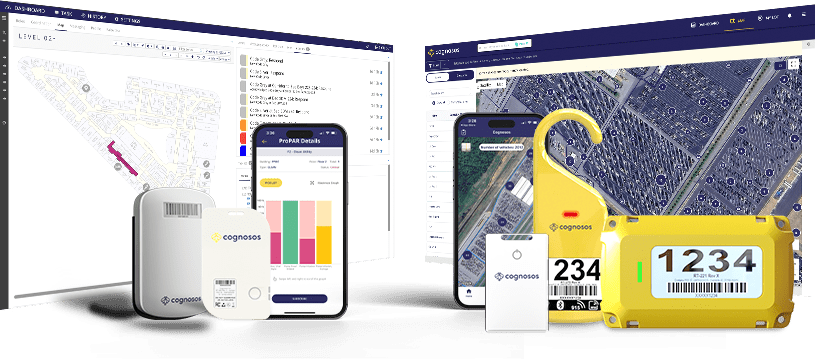When it comes to post-assembly vehicle quality, assembly plant managers face not one black hole, but two: finding vehicles that need repair and tracking their journey through repair stations.
By gaining visibility to these critical blind spots, plant managers can achieve remarkable improvements: increased plant throughput, better mean-time-to-repair metrics, and reduced dwell time — all while enhancing overall quality. These improvements can translate directly to measurable financial benefits.
Just Because a Vehicle is Nearby Doesn’t Mean It’s Easy to Find
When vehicles reach the end of the assembly line, they often require some form of quality work, either because post-assembly testing has identified one or more issues, or because vehicles have been “built shy”— assembled without specific components due to temporary shortages.
For vehicles with significant quality issues, storage in the yard is common and real-time Bluetooth/GPS-enabled vehicle tracking technology can quickly and accurately locate them. However, for vehicles needing just a “quick fix”— perhaps a switch replacement or an electronic component swap — they’re typically positioned close to the assembly line and repair stations.
Ironically, these nearby vehicles are often more difficult to find than those in the yard. Unlike yard-stored vehicles, where GPS tracking works effectively, it doesn’t work reliably inside buildings. GPS tracking performance can also be inconsistent in outside locations that are adjacent to large structures where GPS satellite visibility is limited.
This location uncertainty extends repair times — adding to mean-time-to-repair metrics and slowing plant output. Meanwhile, repair station technicians — some of an assembly plant’s most expensive workers — and their stations sit idle until the correct vehicles are located.
Location Visibility — In the Plant, As Well As Outside
The solution lies in vehicle location technology that leverages both GPS and Bluetooth capabilities — and then uses AI and machine learning (ML) to interpret and render the data. Using multiple types of sensors, plants gain real-time visibility of vehicles both inside the plant and in near-plant areas, complementing the GPS-based visibility already available in the yard.
When vehicles can be located quickly and accurately, the benefits multiply rapidly:
- Mean-time-to-repair decreases significantly
- Plant throughput increases
- Repair station productivity improves
- Drivers moving vehicles between repair stations become more efficient
Real-Time Visibility ROI
While the advantages of accurate real-time vehicle location are well-established, there are valuable benefits beyond just knowing where vehicles are. AI-driven analytics as part of these vehicle location technologies provide visibility into the “hidden” corners of the assembly process, offering powerful insights into bottlenecks in the post-test repair process and recurring quality problems that impact repair productivity and slow plant throughput.
Consider this scenario: if vehicles consistently spend two hours at repair stations where they previously spent just one hour — something easily identified through vehicle location analytics — then that increased dwell time likely has specific, identifiable causes.
By identifying and addressing these types of issues and their causes, post-test repair productivity can increase dramatically. These types of improvements not only accelerate throughput times and deliver vehicles to dealers faster but also substantially reduce costs. In some cases, entire repair shifts can be eliminated, and mean-time-to-repair metrics improve across the board.
With real-time visibility to vehicle location and movement throughout the entire plant, plants can eliminate blind spots and optimize operations to positively impact the bottom line. Ready to transform your post-assembly quality processes? Learn how real-time visibility inside and outside the plant can help you achieve greater transparency, productivity, and profitability. Get in touch today.



